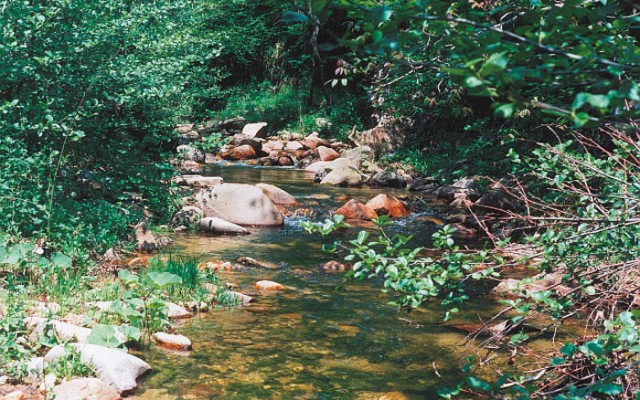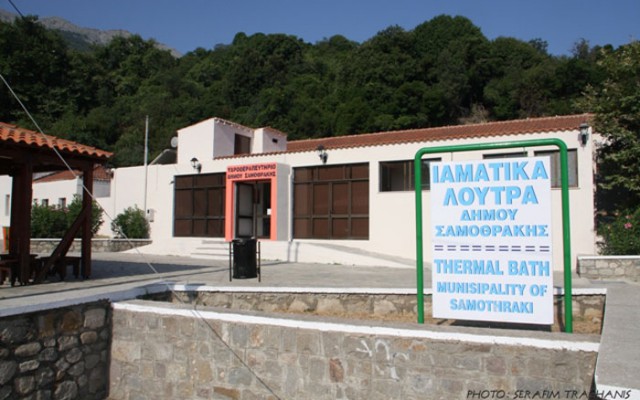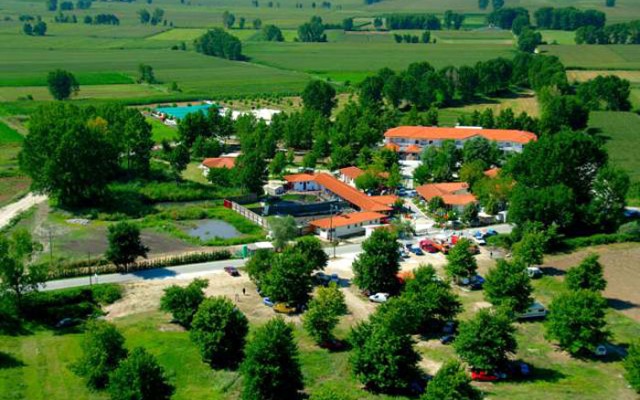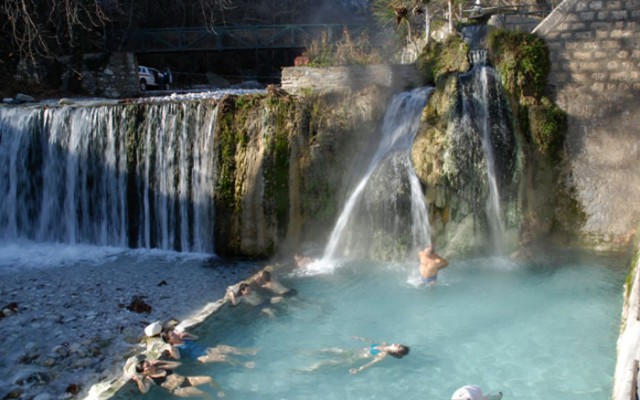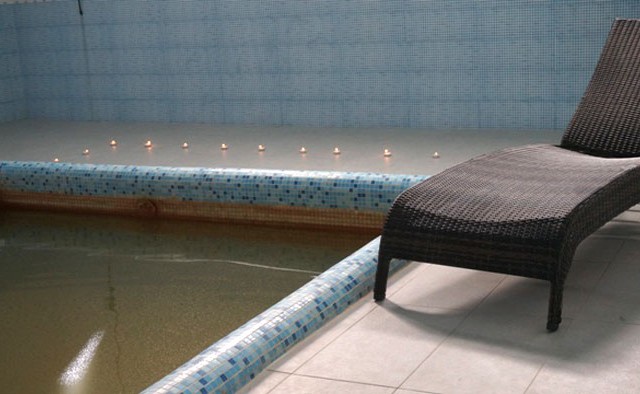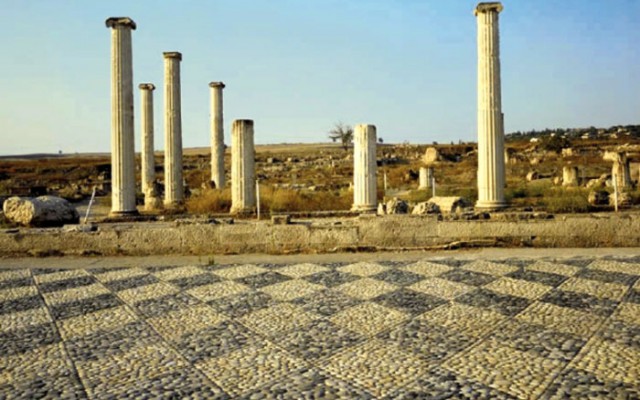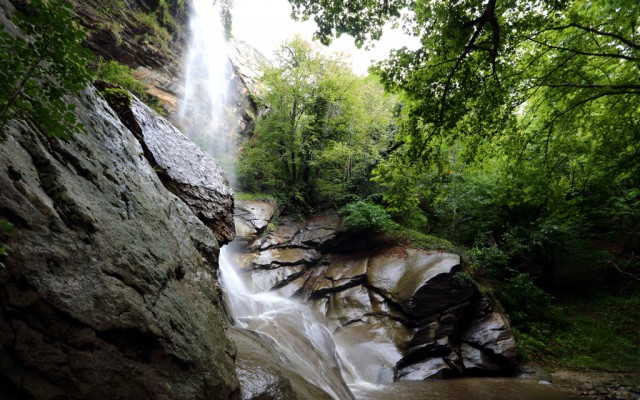Curative Natural Resource Thermia
The curative spring of Thermia Paranestiou of Drama gushes in an alternating environment, clean and healthy, with lush vegetation and excellent climate conditions. The curative spring is at a distance of 25 km north of Paranesti and the old stone hydrotherapy centre testifies the human presence throughout the centuries. The area is ideal for nature lovers, as it offers routes and excursions to nature. Moreover, in Paranesti there is a museum of natural history, which offers its visitors a unique... διαβάστε περισσότεραCurative Natural Resource Psarotherma
Samothraki – the Aeolus’s island according to mythology- is a mystical place. The pebbly beaches, the running waters, the unspoilt nature, the celebrated curative springs and unique antiquities compose an idyllic scenery that is breathtaking and fascinating. The hot curative springs are situated at the entrance of the Therma settlement. In Samothraki, visitors, aside from treatment, will be acquainted with archaeological and historic sites, but also with the unique “lagoons” of cold water. Curative... διαβάστε περισσότεραCurative Natural Resource Krinides
The health place of krinides, with its therapeutic clay and curative water, geographically belongs to a wider area with rich history that begins with the foundation of the city in 360 B.C. One of the most important archaeological sites of eastern Macedonia is situated in Krinides, Kavala. In this historic region one can come across the ancient thermae, the ancient agora, the ancient theatre of Filippoi, Lydia’s place of baptism, the first Christian woman in Europe. So the visitor has the possibility... διαβάστε περισσότεραCurative Natural Resource Pozar
Loutraki baths (Pozar) are located in the municipality of Almopia, 13 km northwest of Aridaia. The word “pozar” means ember, burning coal. The area of the Pozar Baths is a natural sight, located in a green environment with plane trees and waterfalls. Tile paved paths and constructed wooden bridges aid the visitor follow the mountain paths and reach the complex of the 16 caves. The open pool and the “ponds”, which are naturally shaped in the bank of the hot river, offer the chance of bathing... διαβάστε περισσότεραCurative Natural Resource Genisaia (Potamia)
The thermal city of Potamia is situated at the 18th kilometre of the road Xanthi – Komotini. People of the intellect, the arts and literature, like Dimokritos, Protagoras, Leykippos were born and thrived in the historical area of Avdira. In a small distance, lies Vistonida lake, one of the most important wetlands of Greece and a little further is the picturesque port of Porto Lagos. The visitor can combine balneotherapy, with a visit to the Archaeological and Folklore museum of Avdira and go round... διαβάστε περισσότεραCurative Natural Resource Loutrohori
Loutrohori is built on the foot of mount Kamper, on the borders between the prefectures of Pella and Imathia and has an altitude of 90 metres. The beautiful pine forest of the village and the panoramic view of extraordinary beauty that the foot of the hill offers to the tree- covered plain, compose a magnificent scenery. In Loutrohori there are the homonymous curative springs, known throughout Greece for their various therapeutic properties. In the past, they functioned with visitors from different... διαβάστε περισσότεραCurative Natural Resource Agkistro
Agkistro village is built on the Greek- Bulgarian borders, east of the valley of Strymonas. It is an exceptional alternating scenery, serene with lush vegetation and ideal climate conditions. During the reign of Filippos 2nd of Macedonia (4th century B.C.), mines of iron and gold operated in the Agkistro mountain, which along with Paggaio, funded the Alexander ‘s the Great Panhellenic campaign to Asia against the Persians. The hot springs of Agkistro have always been visited by people throughout... διαβάστε περισσότεραCurative Natural Resource Sidirokastro
The curative baths are located seven kilometers west from the city of Sidirokastro. The curative springs are known from byzantine times, but the old facilities were ruined during the Balkan wars. In this area one may combine the care of one’s health with a visit to the byzantine castle, Kerkini lake, Rupel fortress and the bridge of the Strimona river where Hercules completed the feat with “Gironi’s oxen”. Curative Water The temperature of the water is 43, 7- 55ο C Characterisation:... διαβάστε περισσότεραCurative Natural Resource Lagadas
In the valley of Mygdonia, in a green oasis of 100 acres and only 2 kilometres east of the city of Lagadas, lie the homonymous curative baths. The evolution of the baths of Lagada is directely connected with the history, the social conditions, the traditions and the culture, as they were formed through the ages. The first balneotherapy facilities in the region of Lagadas are dated back to 900 A.D. and tradition has it that the baths were created by the byzantine military doctor Ioustinianos. Today,... διαβάστε περισσότερα- 1
- 2


